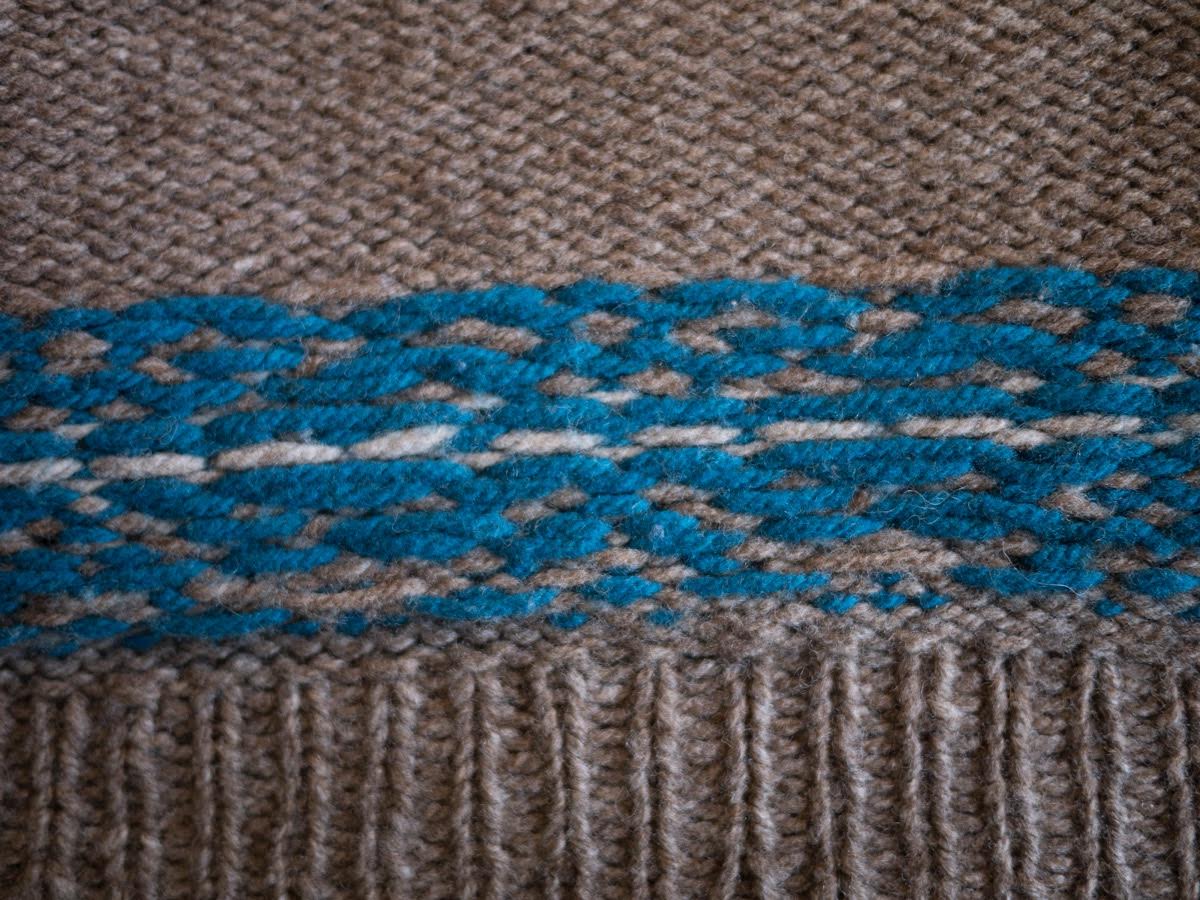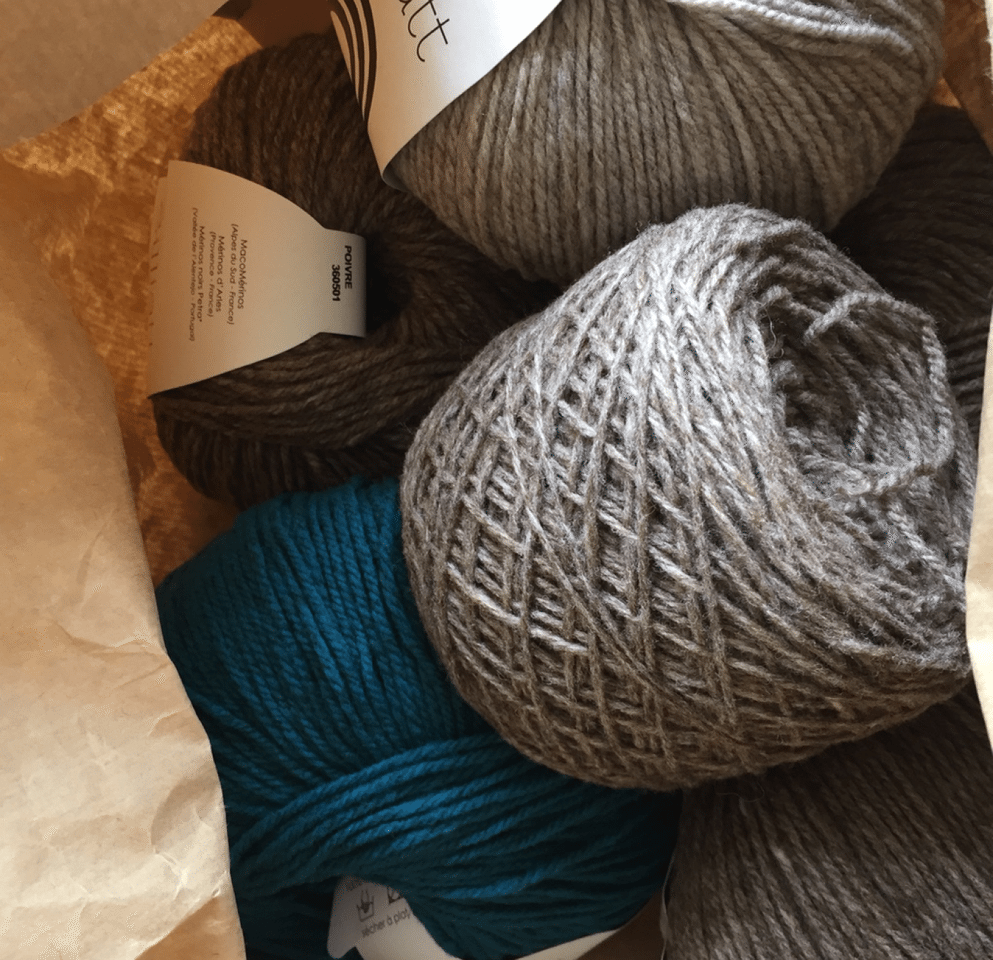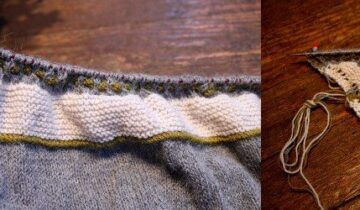You may remember a couple months ago I was raving about our newest yarn at YAK De Rerum Natura Gilliatt. I was so excited by the ethical back story and the passion De Remrum Natura has for this French Merino. I had a feeling YAK’s customers would feel similarly and I was right. There has been huge demand for the Gilliatt and it’s been great to see some projects starting to pop up.
One of those projects was by Imke, who made a beautiful version of Naima by ANKESTRiCK back in September. I asked her few questions on her experience using Gilliatt. All pictures (c) Imke Himstedt.
Why did you choose to use Gilliatt?
I had already heard a lot of praise about the wool – its quality, but also its heritage. I like the fact that it’s reared ethically all the way from sheep to skein, and that every step in its production is traceable. If you live in France this could be a completely local yarn. I also like the fact that it’s a non super wash merino
And then I went to ‘Berlin Knits’ (a new yarn festival in Germany) and got to touch a project that used Gilliatt. And that basically settled it. That and the beautiful colours. And the fact that YAK got it in stock shortly after. That really did settle it then.
How did you find it to work with?
Gorgeous, gorgeous, gorgeous. From the first stitch of my swatch to the final cast off. The yarn runs beautifully through your fingers. I knit with some yarns and just don’t feel the love, even though they may be lovely yarns. Sometimes I just can’t connect to a yarn. With Gilliatt I felt it straight away.
What’s also nice is that stranded work works very well with it. The stitches and floats settle perfectly after blocking.
I like a sewn bind off. For that a yarn ideally has to be quite strong, because of all the friction caused by drawing the yarn end through the stitches again and again. Gilliatt held out beautifully. There was no sign of fraying.
What needles did you use?
I used 4 and 4.5 mm knit pro symphony circular needles (the interchangeable ones) on 60 and 80 cm cables. For the sleeves I used 30 cm addi premium circulars (metal) and 4mm bamboo dpns for the cuffs.
Did you block it?
Only lightly. I patted it flat on the floor without pinning it down. I just made sure that both sides were symmetrical and the stranded colour work element relaxed nicely. Due to the construction it didn’t need harsh blocking.

Have you washed it?
Yes. I can’t remember if I used Eucalan or Soak and just left it in a bowl of luke warm soapy water for half an hour, then squeezed it in a towel and lay it to dry
How has it worn?
Really well. And it’s very much fit for purpose. I made it to go hiking in the Alps in mid autumn to be used as a mid layer. And it was perfect in a way that only wool can be: nice and warm when you need it, but without overheating when you get hot. The fit was perfect as well with the long ribbing hugging around your waist to keep it close to your body and more ease at the top. The fabric has an almost waxy feel to it – it’s not oily – it’s a bit hard to describe – it’s smooth, cool, soft, woolly, super light, and has great bounce, so your garment completely keeps its shape. Pilling is minimal, even though I’ve put it through its paces with wearing a rucksack, getting sweaty, and rubbing my arms against the body while hiking with poles. And even when I got sweaty around my neck, it never felt itchy. (sorry about talking so much about sweat, but I think that that’s the ultimate test for itchiness…)

Any other comments?
The colours are all extremely beautiful. It’s very hard to choose!
I very much appreciate that Gilliatt comes in 100g donuts (not so much the donuts – I don’t like those at all actually (they always end in chaos), but that’s easily remedied by winding a ball before you start). But the fact that it comes in 100g quantities. I don’t like darning in ends, so that minimises that by a lot. Another plus: I only had one knot in the seven skeins I bought. I find that acceptable. More and I would have felt a bit cranky (because like I said, I don’t like darning…) (I can’t actually remember if it was a knot or a short, lumpy join – I tend to cut both varieties out and splice as I’m working)
There wasn’t any vegetable matter or other foreign bodies in the yarn.
The only thing that I wasn’t 100% pleased with is that quite a few balls weighed in under 100g. (I always weigh before and after knitting, so I can gauge how far a started skein might take me at any given point in the project. That’s another way of managing unnecessary loose ends). Out of my 7 balls 4 were below 100g, and two of those were only 95g. That’s more than marginally less than stated on the ball. But that’s really my only complaint.
Would you recommend this yarn? Would you use it again?
Absolutely yes on both counts.
If you would recommend it, what kind of projects for you think it would work well for?
cardigans, warm and cosy jumpers, gilets, hats, mittens, scarves, cowls, colour work
Thank you so much Imke. So great to hear how much you loved working with Gilliatt. Your comments about the weight of some of the balls of yarn did come as a surprise so we passed on your comments to De Rerum Natura who got straight back to us and reassured us that industry standard margin for yarn being above or below the stated weight on the ball band is 5%. This can be due to things like moisture and other factors in fibre production.
We now have new stock of all of the colours of Gilliatt and we are also now stocking Ulysse Gilliatt’s little sister. Its the same great base but a lighter sport weight. Head over to our Ravelry page where we have just started a Gilliatt KAL!







 No products in the basket.
No products in the basket.